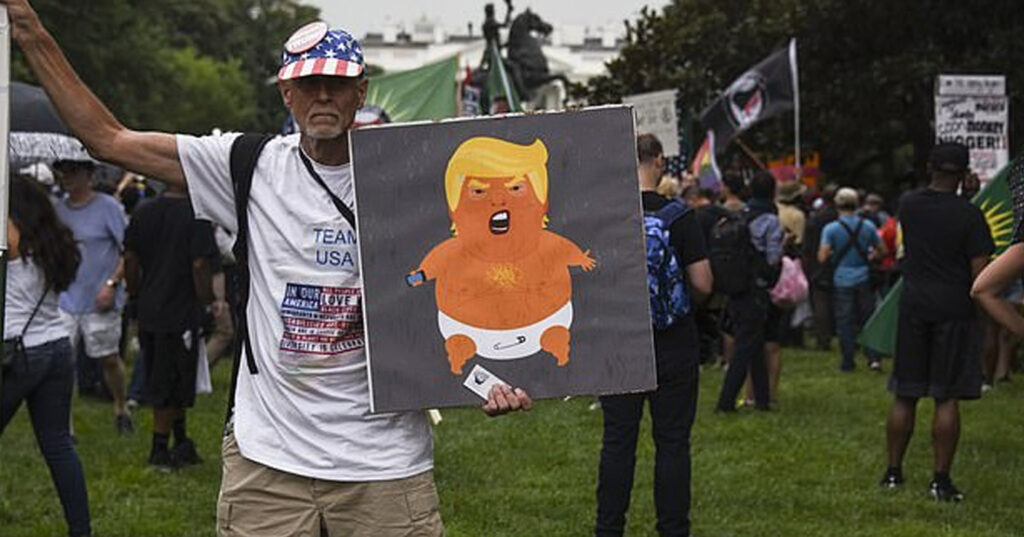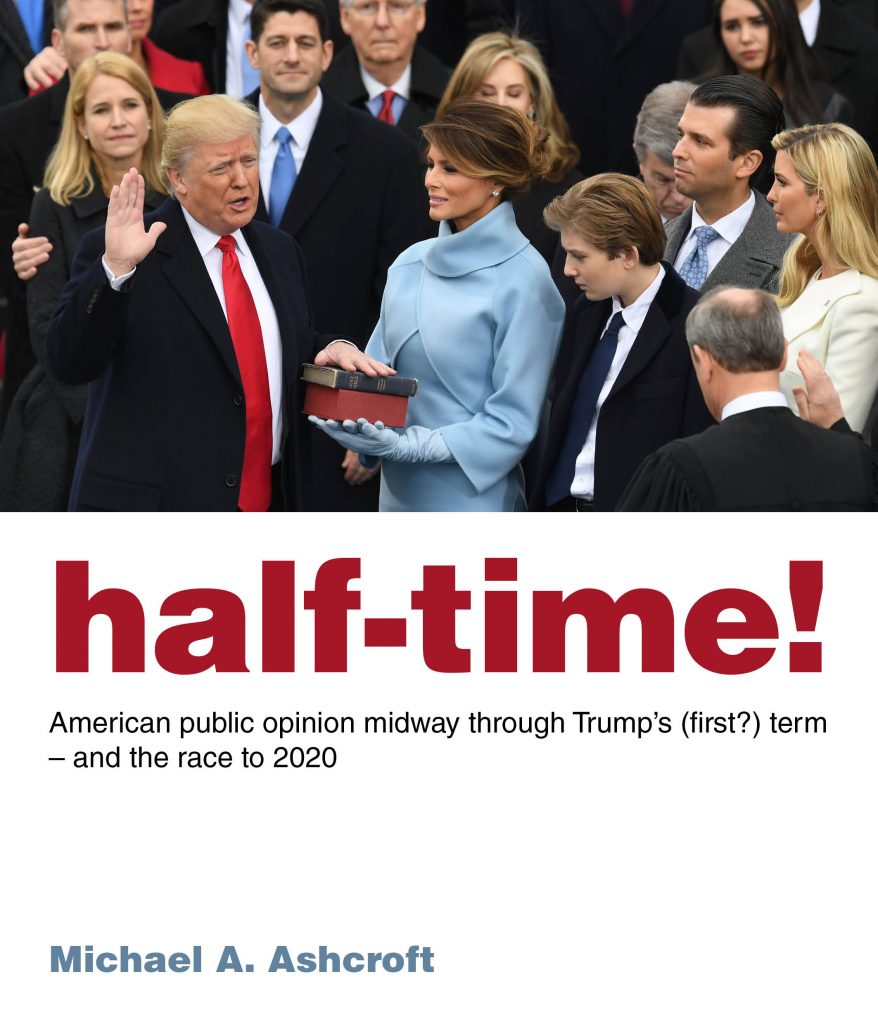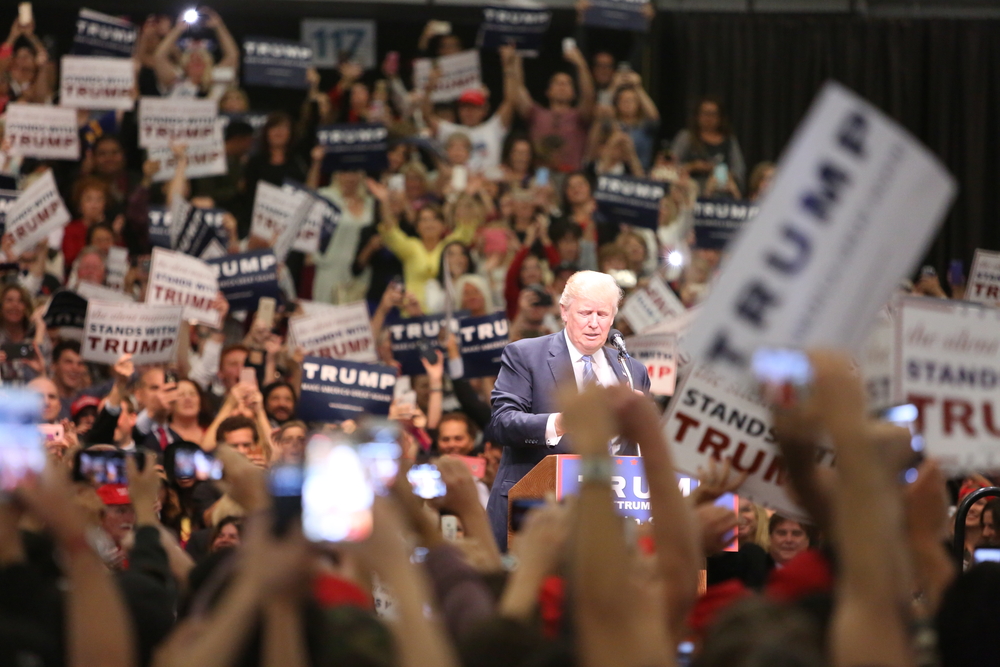
This piece was first published in the Mail on Sunday
It is two years today since Donald Trump entered the White House. That means we are exactly half way between the last presidential inauguration and the next one; whether it also proves to be the half-way point in his presidency remains to be seen. Does President Trump have two years left in office – or six?
As my research has found over the last two years, those who voted for him positively, rather than as the only way of avoiding President Hillary Clinton, remain solidly behind him. They point to a thriving economy stoked by tax cuts and deregulation, two conservative appointments to the Supreme Court, a newly combative approach to international affairs, willingness to reshape global trade deals in the interests of American jobs, and a tough line on immigration and border security. They like that he continues to say exactly what he (and often, they) think, and the outrage this causes in some quarters only adds to their enjoyment. And if his statements sometimes fall foul of the fact checkers, they see him as honest in what they regard as the more important sense that he is authentic and has set about doing the things he said he would: rare enough traits in an elected official. After years of feeling ignored or even despised by the political class, believing a President is speaking and acting for them is an almost exhilarating experience. And if some Trump voters view his personal ethics with distaste and wish he would calm down on Twitter, they decided at the election that other things mattered more, and this still holds true.
Those who did not support Trump think he has been every bit as bad as they expected, and worse: they see a divisive, erratic, chauvinistic President embarrassing America on the world stage. Not only that, they seem to become more riled and determined by the month.
But despite the well-documented polarisation of American society, not everyone falls into one of those two camps. Those who voted for Trump as the lesser of two evils are less supportive than those who were enthusiasts from the outset. The same is true of those who backed the President having voted for Barack Obama in 2012 – a group who helped Trump to his tiny but crucial winning margins in Michigan, Pennsylvania and Wisconsin around which he built his victory. And especially in prosperous suburbs, enough Republicans stayed at home or switched sides in last year’s midterm elections to give the Democrats control of the House of Representatives. Meanwhile, the stock market reversals at the end of 2018 are a reminder that support built on a booming economy can be precarious.
This clearly represents a huge opportunity for Trump’s opponents. But for all the encouragement they take from his historically low approval ratings, the nation’s view of the President is only half the story. The other half – the identity of his opponent, and the platform and message he or she adopts – will be decided by millions of Democrats in a five-month series of elections beginning early next year. With around thirty potential candidates, this campaign is only just getting underway. But my latest research, published today, shows what these voters are thinking.
Most Democrats would rather see their party adopt more liberal, progressive candidates than more moderate, centrist ones – and the more committed they are to the party, the more likely they are to feel this way. Our analysis identifies ten distinct segments of the electorate. Of the three predominantly Democratic groups, the young, educated and affluent Cosmopolitan Activists are by far the most likely to get involved in campaigns and – crucially – vote in the Democratic primaries. Seven in ten say they are liberal and nearly one in six say they are socialists. The group has doubled in size in the last two years at the expense of our other two Democrat-leaning segments, the Mainstream Liberals and more socially conservative Blue-Collar Democrats. This tallies with what we hear in focus groups, where previously moderate voters have described how they have been driven leftwards in reaction to Trump and all his works. The perpetual horror at the President’s words and deeds, especially on social media, has produced an expanding class of radicalised activists for whom the antidote to Trumpism is not moderation and consensus but can only be found on the left. They overwhelmingly want to see a liberal progressive as their party’s nominee in 2020.
Uncommitted voters in the middle, meanwhile, prefer a centrist candidate, and the Republicans in play – such as those who switched from Obama to Trump in the rustbelt, and moderates who stayed at home or voted grudgingly to stop Hillary, and reluctant Trumpers who backed the Democrats last November but would still put themselves on the centre-right – would take some convincing to elect someone the most radical Democrats have chosen in their own image.
Already, some Democrats are wrestling with the trade-off between a candidate they can celebrate and a candidate who can win. Their decision will determine who delivers the next inaugural address on Capitol Hill two years from today.
Half-Time! American public opinion midway through Trump’s (first?) term – and the race to 2020 is available to order from Biteback Publishing



